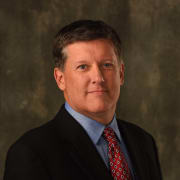Justin Thomas, Shane Lowry, Adam Scott and Gary Woodland Among Players With Work to Do

With the major championship season complete for 2023, those on the PGA Tour will turn their attention to the FedEx Cup playoffs. And it sneaks up on you fast.
Not only are there just two events remaining in the regular season, but the playoff format has been changed this year, with just the top 70 players qualifying for the FedEx St. Jude Invitational, the first of the three events, which begins in two weeks.
More from the British Open edition of the Weekly Read: Zach Johnson's Ryder Cup Dilemma | PGA Tour-LIV Drama Set to Resume | FedEx Cup Countdown | Fore! Things
Shane Lowry, Thomas, Adam Scott and Gary Woodland are some of the big names who are not among the top 70. And if they are not in the top 70, not only do they have work to do to get into the playoffs, they are not among the top 50 that would get them to the top 50 and the BMW Championship.
The top 50 is also an important status point for 2024: It assures you a place in the eight designated events, all of which are expected to have smaller fields of no more than 80 players and likely without a cut.
With $20 million purses as well, it’s a form of guaranteed payment every time you play. Getting in them is important.
For a player such as Justin Thomas, there is an out: He is currently ranked 24th in the world and a top 30 standing in the Official World Golf Ranking gets you in. So do sponsor exemptions. Still, it’s hard to believe the subject is even being broached with Thomas, who has missed the cut in three major championships this year.
Jordan Spieth is set for the FedEx St. Jude and the BMW Championship, but he’s outside of the top 30 and needs to do some work to assure a place in Atlanta for the Tour Championship.
Pro Golf's Ongoing Equipment Debate
Martin Slumbers, the CEO of the R&A, was asked about the ongoing comment period regarding the proposed rollback of the golf ball presented earlier this year by the USGA and the R&A. Under the idea that would go into effect in 2026 if passed, there would be a “modified local rule’’ that could be used for “elite’’ golfers, which would require them to play a ball that under testing reduces this distance they travel.
“Our role, indeed, our responsibility, is to do what is right for the sport when we reach out determination on the way forward,’’ Slumbers said last week during the R&A news conference before the Open. “All I really will say at this stage is that I would echo [USGA CEO] Mike Whan’s sentiments when I say that doing nothing it not an option.
“We’ve put forward a targeted and proportionate measure to address a complex issue, which we believe is key to preserving the inherent challenge of golf and to ensuring that it has a sustainable future.’’
The reaction to the proposal has been mixed, but it’s been particularly negative from professional players and golf ball manufacturers. The idea that pros or elite players would use different equipment or play by different rules than amateurs has always been a controversial subject in the game—even though, in truth, the average guy is not hitting a driver that Rory McIlroy hits.
There are also questions about what constitutes “elite’’ play, and Slumbers suggested it should begin at high-level amateur golf, where distance gains are already prevalent.
When McIlory recently experimented with a wooden driver and saw the ball go some 60 yards shorter than his average tee shot, it again reminded that the distance issues in the game are not confined to the ball.
“I still keep on the radar longer term around the drive because I do think there is an element of skill and technology that we’ve discussed in this room a number of times,’’ Slumbers said. “But at the moment we’re focused on the MLR of the ball, but I absolutely hear what all the players are saying.’’
One of them is Scott, who on Smylie Kaufman’s podcast noted how much the driver has changed over the years.
“The biggest fundamental change in the game since I've been a pro is traditionally the driver has been the hardest club to hit in the bag, and now it’s the most forgiving," Scott said. “That’s the biggest evolutionary change in the golf bag to me, out of the equipment.’’
Scott has a good point. There’s more to the incredible distances players hit the ball than, well, the ball.
“The penalty for missing a driver just isn't high enough anymore, in my opinion, at the top level,” Scott said. “I’d want to address that first and see what knock-on effects that has. If guys want to swing at it 130 mph with a tiny driver head, then good luck.’’
